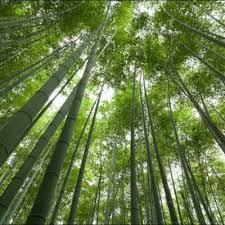
Nature of work
A conservation scientist and forester manage overall land quality of forests, parks, rangelands, and other natural resources. He/she can be responsible for:· Monitoring forestry and conservation activities to assure compliance with government regulations.
· Establishing plans for managing forest lands and resources.
· Supervising activities of other forestry and conservation workers.
· Choosing and preparing sites for new trees using controlled burning, bulldozers, or herbicides to clear land.
· Negotiating terms and conditions for forest harvesting and land-use contracts.
He/she directs and participates in forest-fire suppression and determines ways to remove timber with minimum environmental damage and monitors forest-cleared lands to ensure that they are suitable for future use.
The following are some types of conservation scientists and foresters:
Urban foresters live and work in larger cities and manage urban trees.
Conservation education foresters, train teachers and students about issues facing forest lands.
Range managers; protect rangelands to maximize their use without damaging the environment.
Soil and water conservationists, give technical help about conservation of soil, water, and related natural resources.
Environment of work
A conservation scientist and forester works for governments or on privately owned lands. He/she typically works in offices, laboratories, and the outdoors, sometimes doing fieldwork in remote locations. When visiting or working near logging operations or wood yards, he/she wears a hardhat. The work can be physically demanding. Some of them work outdoors in all types of weather, occasionally in isolated areas. He/she may need to walk long distances through dense woods and underbrush to carry out his/her work. In an isolated location, a forester or conservation scientist may work alone, measuring tree densities, regeneration, or other outdoor activities. He/she works closely with the public, educating them about the forest or the proper use of recreational sites. Fire suppression activities are an important aspect of his/her duties, which involve prevention as well as emergency response. Therefore, his/her work has occasional risk. Most of them work full time and have a routine work schedule. Responding to emergencies or fires may require conservation scientists and foresters to work longer hours. Professional life
Many conservation scientists and foresters advance to take on managerial duties. He/she may conduct research or work on policy issues, often after getting an advanced degree. A conservation scientist and forester in management usually leaves field work behind, spending more of his/her time in an office, working with teams to develop management plans and supervise others. The development of previously unused lands, in addition to changing weather conditions have contributed to increasingly devastating and costly fires. Increases in funding and new programs should create opportunities for foresters and range managers. Restoring lands affected by fires also will be a major task.Typical starting salaries: 30000 SYP.
Getting the job
A conservation scientist and forester typically need a bachelor’s degree in forestry or a related field, such as agricultural science, rangeland management, or environmental science. Although graduate work is not generally required, some conservation scientists and foresters get a master’s degree or Ph.D. Bachelor’s degree programs are designed to prepare conservation scientist and forester for his/her career or a graduate degree. Alongside practical skills, theory and education are important parts of these programs. Courses for bachelor’s and advanced degree programs in forestry and related fields typically include ecology, biology, and forest resource measurement. He/she also typically has a background in a geographic information system (GIS) technology and other forms of computer modeling. Skills
There are some skills need to be improved, such as:- Analytical skills. He/she must evaluate the results of a variety of field tests and experiments, all of which require precision and accuracy.
- Critical-thinking skills. He/she reaches conclusions through sound reasoning and judgment.
- Decision-making skills. He/she must use his/her expertise and experience to determine whether his/her findings will have an impact on soil, forest lands, and the spread of fires.
- Interpersonal skills. He/she needs to work well with the forest and conservation workers and technicians he/she supervises, so effective communication is critical.
- Physical stamina. He/she often walks long distances in steep and wooded areas. He/she works in all kinds of weather, including extreme heat and cold.
Sources and references
If you need any further information on what is included in this file, you can visit the following websites:- www.seps-sy.org, Syrian environment protection society
- apnature.org, The Arab Group for the Protection of Nature
- eponline.com, Environmental Protection Magazine
- www.rangelands.org, Society for Range Management
- Arab Standard Classification of Occupations, 2008, Ed. Arab Labor Organization.
Summary
A conservation scientist and forester manage forested lands for a variety of purposes of timber production, conservation and recreation.He/she maintains and manages the balance between various issues associated with woodland areas, such as commercial interests, biodiversity and public access. The challenge for modern forestry is to establish a balance between competing economic and social demands for forest and land use.
